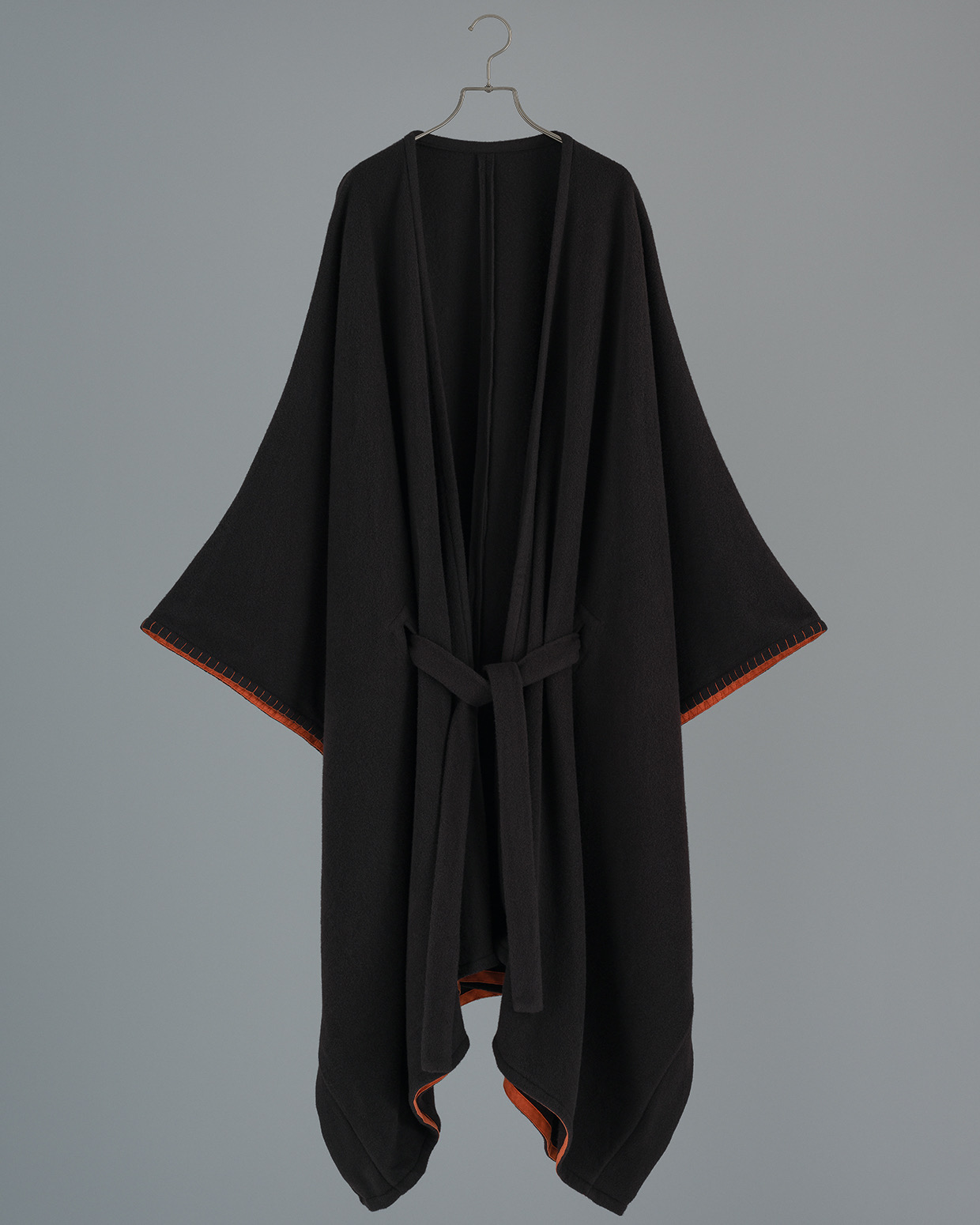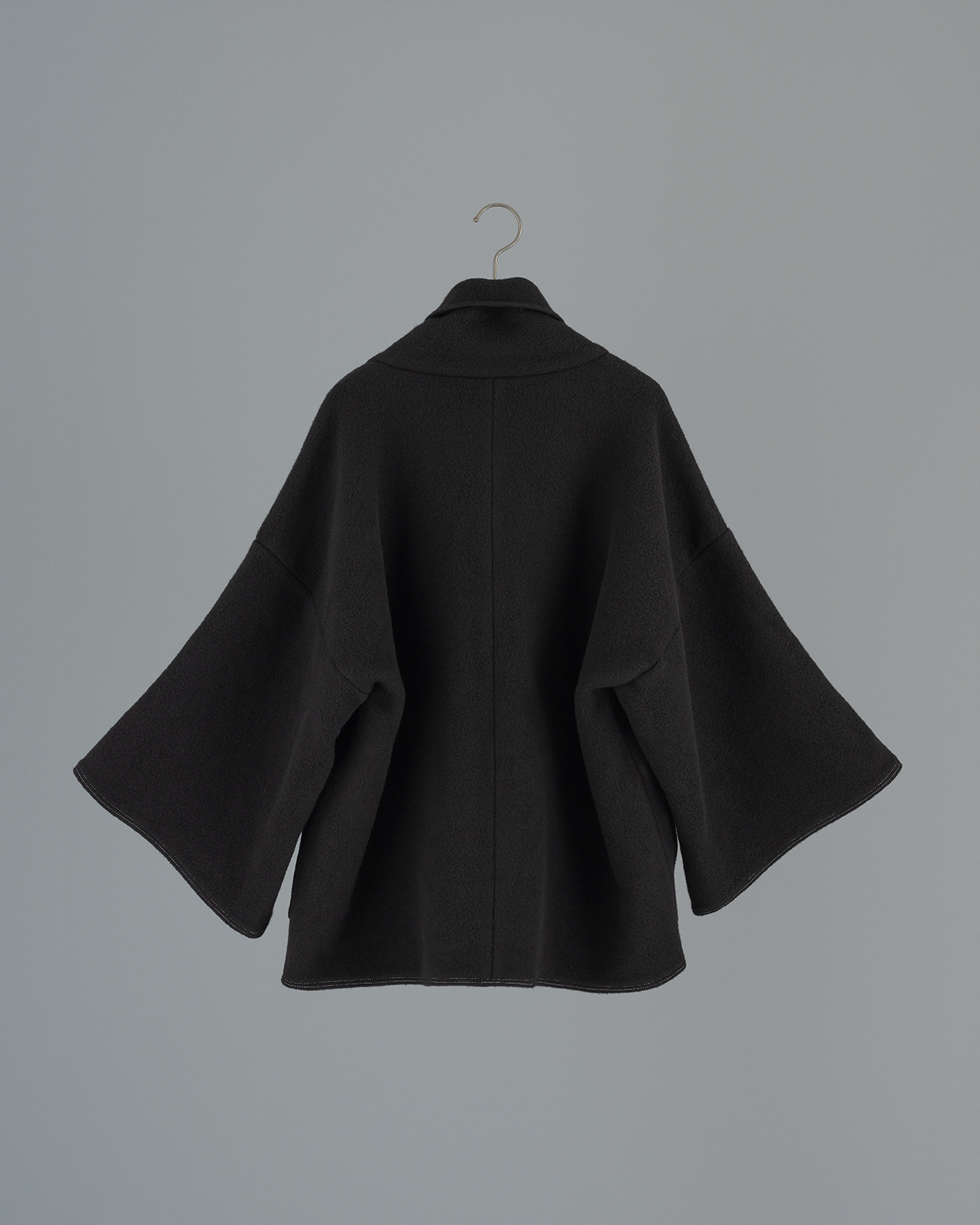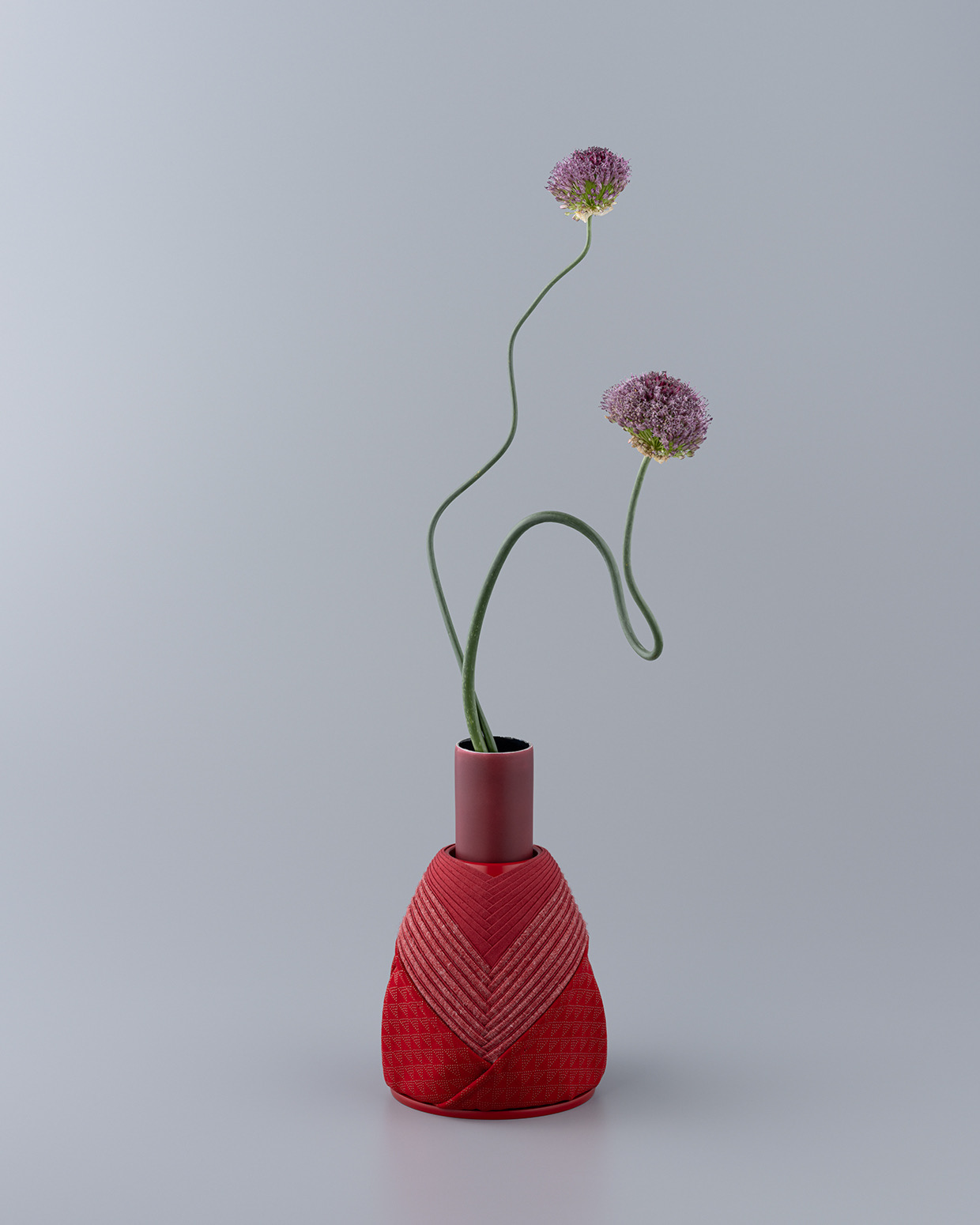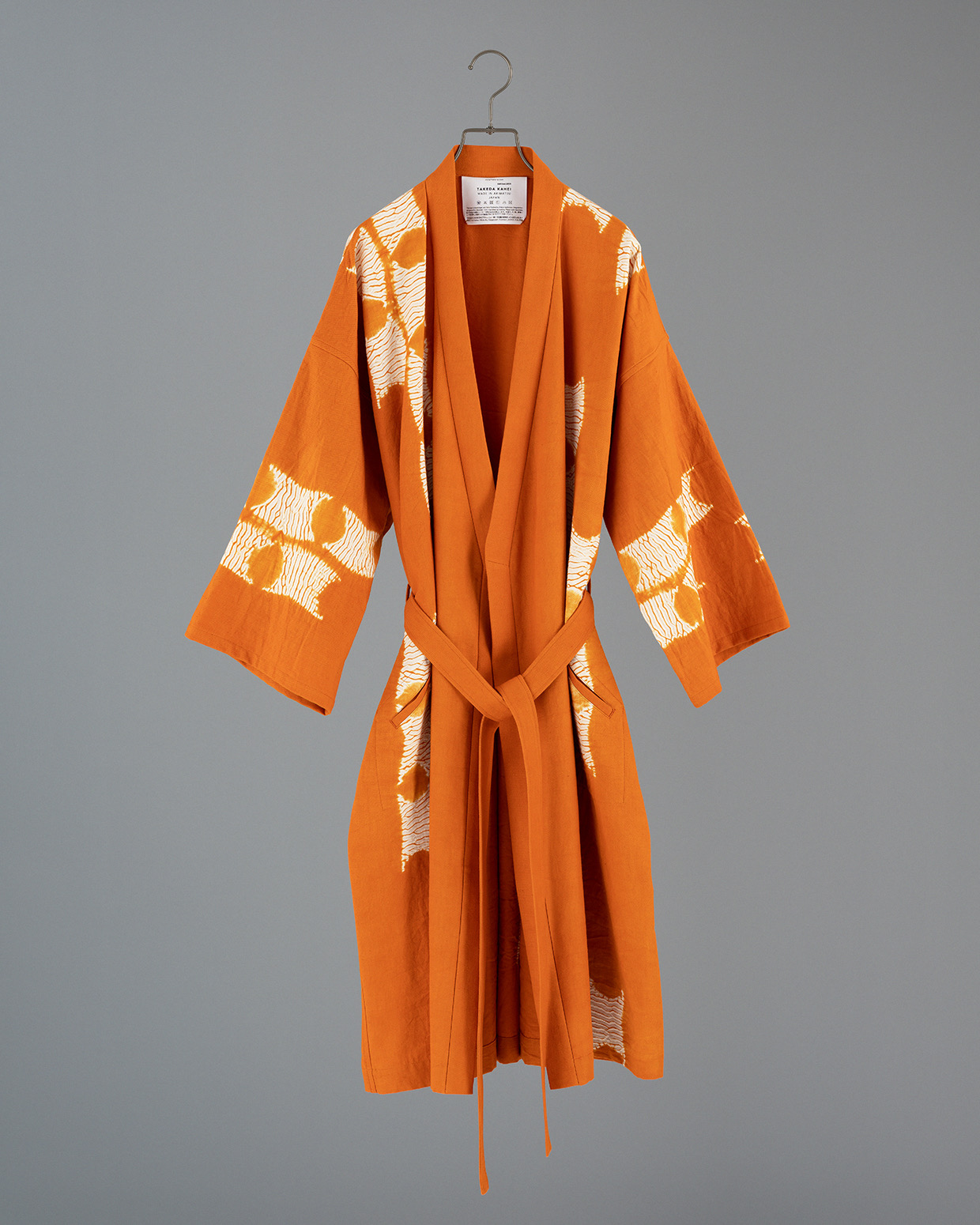In Praise of Life

Kimono, the traditional costume of Japan.
Kimonos are well known throughout the world, but their diversity of shapes and materials is still not well known.
The Nagoya Kuromontsuki-zome is a historical kimono that has been handed down by Yamakatsu Senko since 1919.
The Kuromontsuki-zome is dyed in deep, glossy black and has been worn in everyday life as a kimono with a crest. Japanese people have also loved to wear this beautiful black kimono as formal wear to share important milestones in their lives with their loved ones since ancient times.
Yamakatsu Senko has just completed “In Praise of Life,” a collection of wool coats dyed with the special “black dyeing” technique used for Kuromontsuki-zome.
In response to Mr. Nakamura’s wish to make Japanese culture more accessible, the designer researched the kimono form inherited from his grandmother and developed the collection of three items: the “Black Dyed KIMONO Coat,” the “Black Dyed HAORI Coat,” and the “Black Dyed HAORI Cape.
The material used is Bishu wool. By using fabrics from the wool production area around Ichinomiya City, which, together with Nagoya City, is located in Aichi Prefecture, the entire production process from fabric to dyeing was carried out in the same area.
We hope that people around the world will “admire life” by wearing our beautiful black outerwear.
Technique:
Black Dyeing
Since it is difficult to achieve a deep black color by black dyeing alone, a preliminary dyeing process using red dye has been used since ancient times.
Red dye equivalent to approximately 5% of the fabric is dissolved in boiling water to make a dye solution, which is then placed in a dyebath to dye the fabric.
The dye is precisely adjusted, which can only be done by craftsmen with many years of experience.
To achieve black color, the fabric is dyed with a 200% to 400% concentration of dye, and to prevent color fading, we soak the fabric in water for one day and night.
This makes the dyed fabric more robust and prevents fading over time, resulting in a strong, shiny black color.
The process is time-consuming and labor-intensive because it is a traditional method, but the warmth, durability, and beautiful black finish made by hand are highly appreciated.















